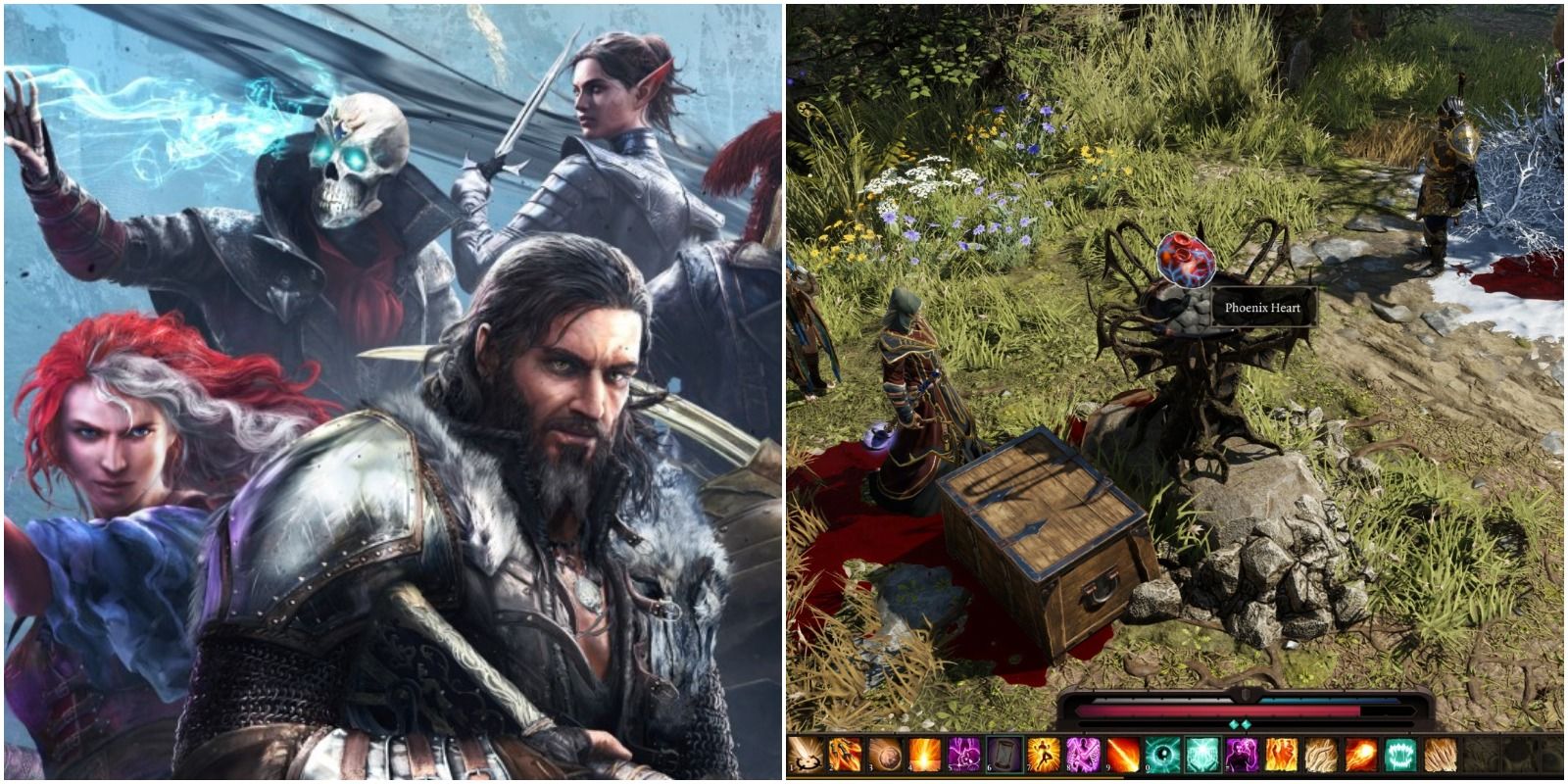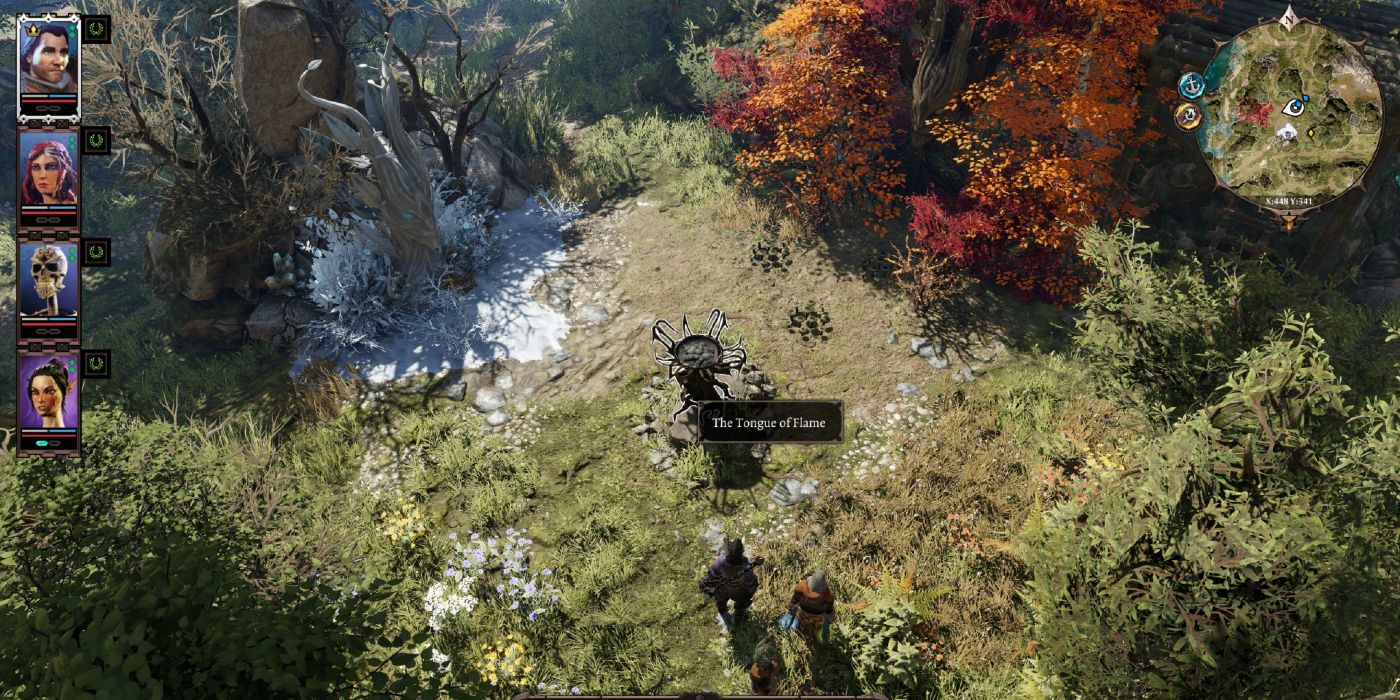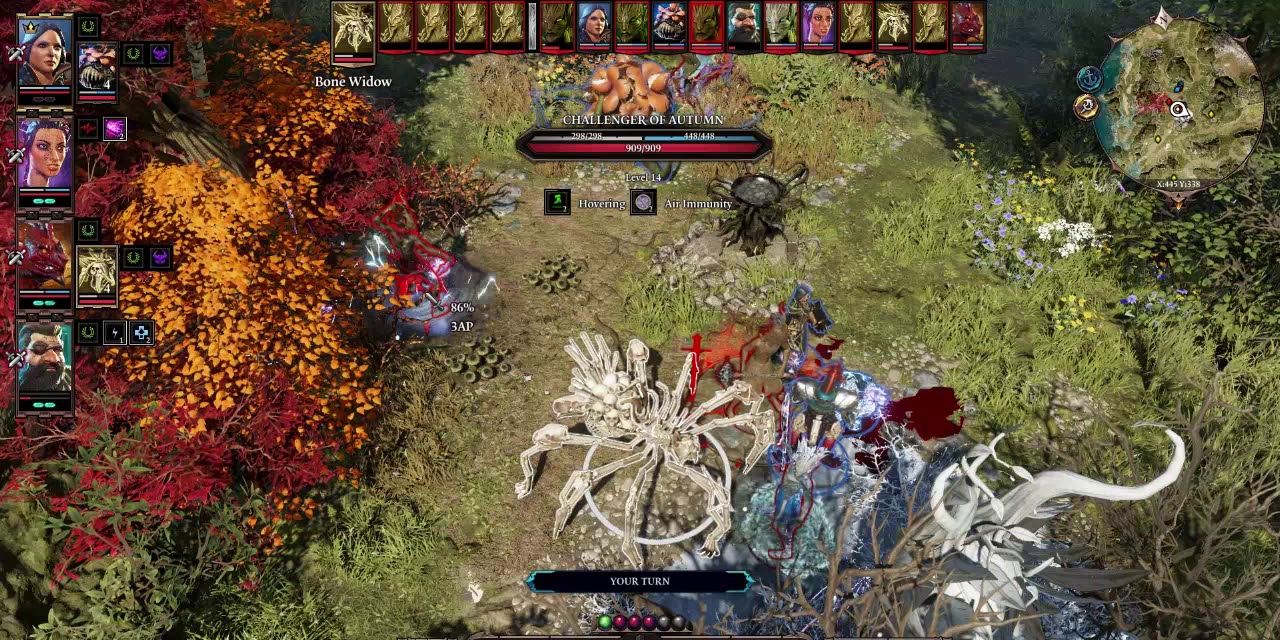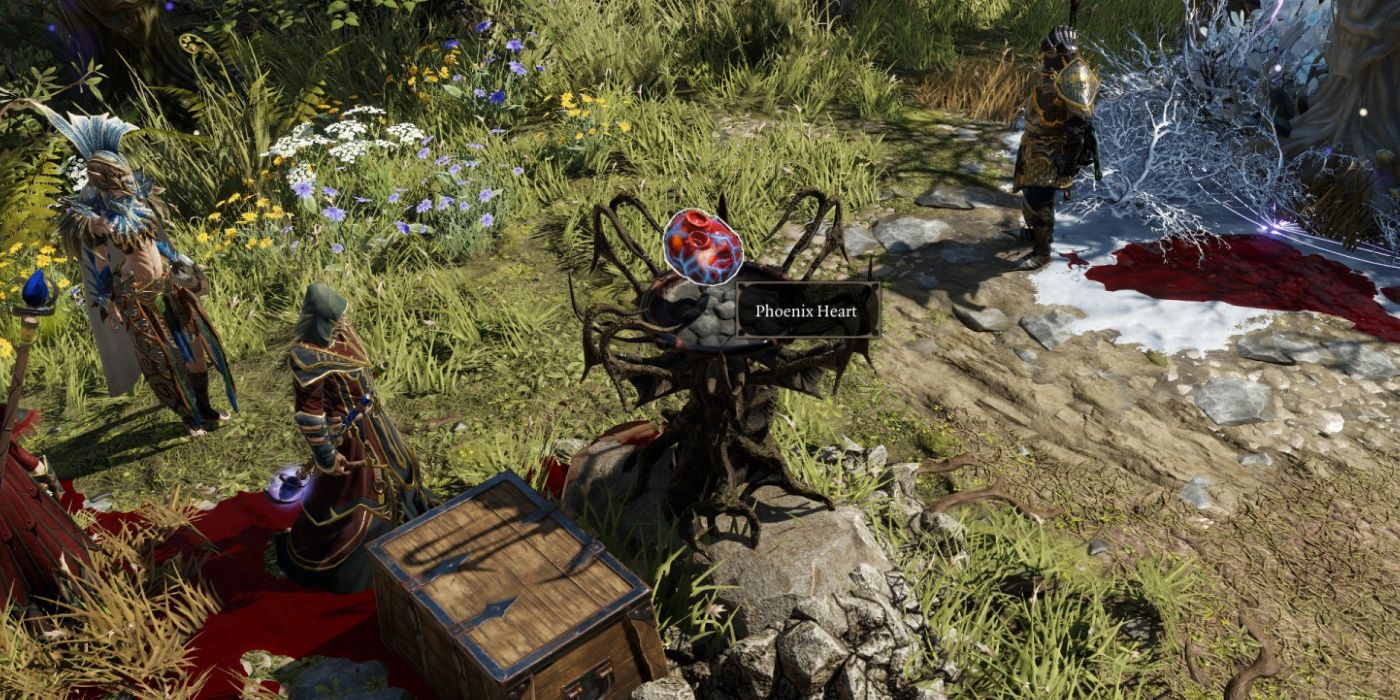Divinity: Original Sin 2 offers no shortage of side quests and escapades. Some are fairly obvious, but others are a bit harder to find and beat. Still, the Godwoken should never pass these up, as they can potentially offer fantastic rewards.
One such reward is the Phoenix Heart, which players can obtain via a side quest in Act 2 on Reaper's Coast. However, claiming this prize is no walk in the park. Follow the steps below to find the Phoenix Heart, claim it, and discover the potential it holds.
Updated August 20, 2021 by Demaris Oxman: As they play through Divinity: Original Sin 2, many players may be caught off guard as they stumble into "A Trial For All Seasons." The quest gives no indication that such a difficult fight will begin once the party solves the quest's initial riddle, and many may be unprepared. Yet, the Phoenix Heart is a worthwhile reward for completing the challenge — and if the party flees from battle, they forfeit it. With that in mind, we've updated this guide to include some tips and tricks for the fight, so that players may claim their prize with ease.
Where To Find The Phoenix Heart
Players receive the Phoenix Heart as a reward for the quest "A Trial For All Seasons." This quest is obtained by speaking to the Tongue of Flame, a mysterious brazier located in the forest on Reaper's Coast at coordinates X: 448 Y: 341. Upon engaging in conversation, the brazier will offer the player a riddle:
"Winter shudders with ice and snow. Autumn rumbles, the sky lit aglow. Summer burns, air fiery as a hearth. Spring quenches, with bloody rebirth."
Solving The Riddle
Surrounding the Tongue of Flame are four statues: the Hero of Winter, Hero of Autumn, Hero of Summer, and Hero of Spring. The player must create specific elemental reactions or surfaces in front of each of these statues, using the riddle's words as a guide. Once the correct reaction has been produced, the statue will show a purple shimmer swirling around it.
- Hero of Winter: The player must create an ice surface. This can be done with certain Hydrosophist spells such as Hail Strike. Alternatively, players can create a water surface with a water balloon or Rain, and freeze it with the spell Global Cooling.
- Hero of Autumn: This is perhaps the most complex, as the Godwoken must create an electrified cloud. The first step is to create a water surface, then use a fire spell on the water to create a steam cloud. Finally, use an electrifying spell on the cloud such as Dazing Bolt.
- Hero of Summer: Upon first reading the riddle, many players may try to create a fire surface; however, Fireball alone won't do the trick. Instead, players must create a fire cloud. They can accomplish this by using Vaporize on a fire surface. Alternatively, Laser Ray can generate a fire cloud.
- Hero of Spring: Lastly, all that's needed here is some blood. If there's an elf in the party, they only need to use their racial ability Flesh Sacrifice. Otherwise, using the spell Raining Blood or simply attacking a party member will do the trick.
Immediately after completing these steps, the Tongue of Flame will congratulate the player — and inform them it is time to prove themselves in combat. A Challenger will emerge from each statue, ready for battle. Be prepared for a tough fight.
Defeating The Challengers
Screenshot via CrazyCatDev on YouTube
Each of these beings boasts an elemental immunity corresponding with the element used to awaken them. They are each at level 14, and pose a challenge even to Godwoken who match their level. The Heroes themselves will buff the challengers at the end of every turn. Pay attention to the Challengers' immunities and armor levels, and watch out for harmful elemental surfaces.
- Challenger of Winter: Immune to Water damage; avoid using Hydrosophist spells. The Challenger of Winter's Physical Armor is weaker than its Magic Armor; target it with physical damage (e.g. swords, bows, Necromancer spells) to bring it down quickly.
- Challenger of Autumn: Immune to Air damage; avoid using Aerothurge spells. As with Winter, its Physical Armor is this enemy's lower defense, so target it with physical damage rather than with spells.
- Challenger of Summer: Immune to Fire damage; avoid using Pyrokinetic spells. This Challenger has lower Magic Armor than physical armor, so elemental damage (i.e. Water, Earth, or Air) is the player's best bet here.
- Challenger of Spring: Immune to Earth damage; avoid using Geomancer spells or any type of poison. Like the Challenger of Summer, this enemy's Magic Armor is the lower of its defenses, so target it with magic.
Players should ensure that they have plenty of healing items and spells before initiating the battle. All Challengers will impose harmful status effects on the party, such as Frozen, Burning, and Stunned. Healing spells which remove these effects help keep the party members mobile and allow them to continue dealing damage.
Once the party has won, speak to the Tongue of Flame once more. A chest will be revealed with the party's winnings inside. These include gold and high-value items, as well as the sough-after Phoenix Heart.
What The Phoenix Heart Does
When consumed by an elf, the Phoenix Heart will grant the eater the spell Flaming Tongues. Only an elf may gain knowledge by consuming flesh; if any other race eats the Phoenix Heart, they will not learn the spell and will simply become Diseased.
If the player does not have an elf in their party (or simply wants a non-elf character to learn the spell), use the Mask of the Shapeshifter to take on the form of this race. Doing so will grant all the racial benefits, including the ability to consume the heart to learn the spell.
The Flaming Tongues Spell
A Pyrokinetic skill, Flaming Tongues creates a fiery aura around the user for three turns. When any enemy character enters this aura, flames will lash out at them, dealing fire damage and creating a fire surface at their feet. Players can even trigger this effect by teleporting their foes into the spell's radius. It's a fantastic spell for close-quarters combat, and scales with the user's Intelligence stat and Pyrokinetic skill.




